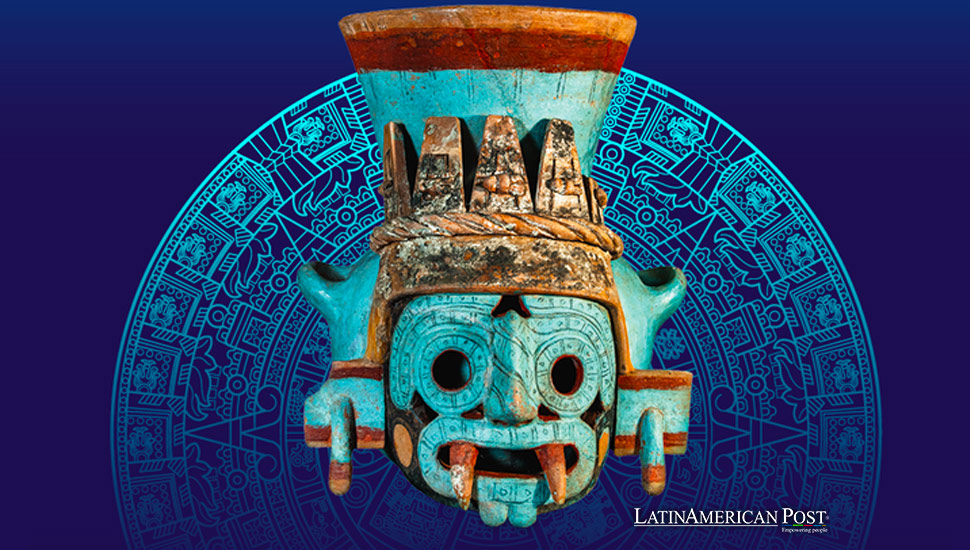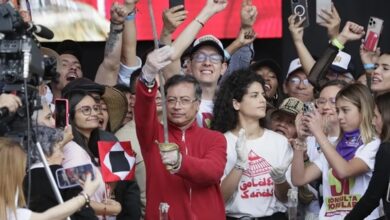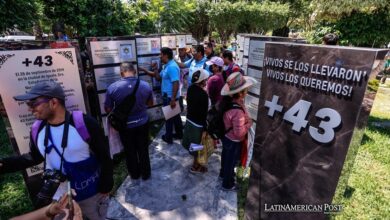Mexican Film Series Celebrates Indigenous Heritage in Paris

A cinematic tribute at Paris’ Quai Branly Museum spotlights the enduring pre-Hispanic roots of Mexico’s indigenous cultures through poignant contemporary films and historical reflections from May 23 to 26.
From the heart of Mexico to the artistic halls of Paris’ Musee du quai Branly, the resilience of pre-Hispanic cultures takes center stage in a film series that explores the vibrant tapestry of Mexico’s indigenous heritage. This cinematic journey, set to unfold from May 23 to 26, offers a window into the souls of civilizations that have withstood the test of colonization and continue to enrich the modern narrative.
Honoring Indigenous Cultures: A Cinematic Journey
Curated by the Viva México, encuentros cinematográficos festival, the selection weaves a story that Mexican cinema has tirelessly told—the struggle and persistence of indigenous peoples in a post-colonial world. Announced by the museum, this retrospective showcases a broad timespan of work from 1991 to 2023 in tandem with the ongoing Mexica. Ofrendas y dioses en el templo mayor’ exhibition. Here, the treasures unearthed from the Templo Mayor archaeological project are on display until September 8, narrating ancient stories through relics and ruins.
The film series honors these timeless cultures, drawing from endless inspiration. Contemporary Mexican cinema brings forth stories like Ernesto Contreras’s ‘Sueño en otro idioma’ (‘I Dream in Another Language’), an evocative piece that delves into the heartbreaking reality of vanishing vernacular languages – with only 68 indigenous tongues currently in use across Mexico. This narrative, about two estranged septuagenarians reunited by a young linguist, resonated globally, earning the Audience Award at the 2017 Sundance Film Festival.
The series also spotlights films that portray the fragmentation of cultural cornerstones. Tatiana Huezo’s ‘El eco’ (‘The Echo’), crowned as the best documentary at Berlinale 2023, narrates the harrowing fates of women forced into exile as their sole means of survival. Similarly, ‘Valentina o la serenidad’ (‘Valentina or the Serenity’) by Ángeles Cruz invites viewers into the Mixtec culture and its mystical artifacts through the grieving eyes of a 9-year-old girl who has lost her father.
Tracing Early Interactions: ‘Cabeza de Vaca’
A historical perspective is lent by Nicolás Echevarría’s ‘Cabeza de Vaca,’ examining the contact between conquistadors and the Maya civilization through the journey of the explorer Álvar Núñez Cabeza de Vaca. His tale of survival and coexistence with indigenous communities over eight years after a failed expedition illustrates the earliest interactions that shaped the New World.
Venturing into a more televised format, the series includes ‘Hernán,’ a Mexican-Spanish co-production directed by Julián de Tavira. Tracing back to 1519, when Hernán Cortés and his forces landed on Mexican shores, the show aims to reconstruct the historical epoch with a dramatic flair. The first and fifth episodes of the series from Prime Video will be featured, highlighting the pivotal roles of language and an interpreter and the Mexica emperor Moctezuma’s men and their encounters with the Spanish invaders.
These films and series serve not just as entertainment but as a cultural dialogue, allowing the Latin American context to resonate in European spaces and fostering understanding and appreciation across continents. The film series transcends the conventional portrayal of indigenous peoples, offering narratives that challenge, educate, and celebrate the richness of these communities.
The event at Quai Branly is a testament to the growing interest in indigenous cultures and the increasing recognition of their influence on contemporary arts. It is also an acknowledgment of the complexity of Latin America’s history, its social fabric, and the ongoing narrative of its people.
The vibrant cinema of Mexico, with its myriad hues of passion and resilience, provides poignant commentary on the indigenous experience—both in its struggle and splendor. By highlighting this in Paris, a city symbolic of art and history, the film series not only brings to the forefront the voices of those long marginalized but also cements the role of indigenous narratives in the global cultural consciousness.
As audiences in Paris immerse themselves in the storied past of Mexico’s indigenous cultures, they partake in remembrance and recognition. This series is a bridge between civilizations, a reminder that history is not just the story of the victors but of all the voices, especially those that have echoed through the ages, undiminished.
A Testament to Cultural Interest
The Quai Branly Museum’s embrace of this film series demonstrates a more inclusive approach to cultural curation and exhibition, one that honors the depth and diversity of human stories. It celebrates heritage and asserts identity, reflecting a broader Latin American ethos that continually shapes its cultural output and political landscape.
Also read: Mexico’s Renowned ‘Dog Whisperer’ Continues to Shape Human-Canine Bonds Across Cultures
Through the medium of film, the Quai Branly Museum and ‘Viva México’ festival open a dialogue that transcends borders, encouraging a reexamination of the past and inspiring a collective introspection. It’s a story of survival, culture, and language – a vibrant past speaking to an engaged present, compelling audiences to listen, learn, and reflect on the enduring legacy of Mexico’s indigenous roots.




